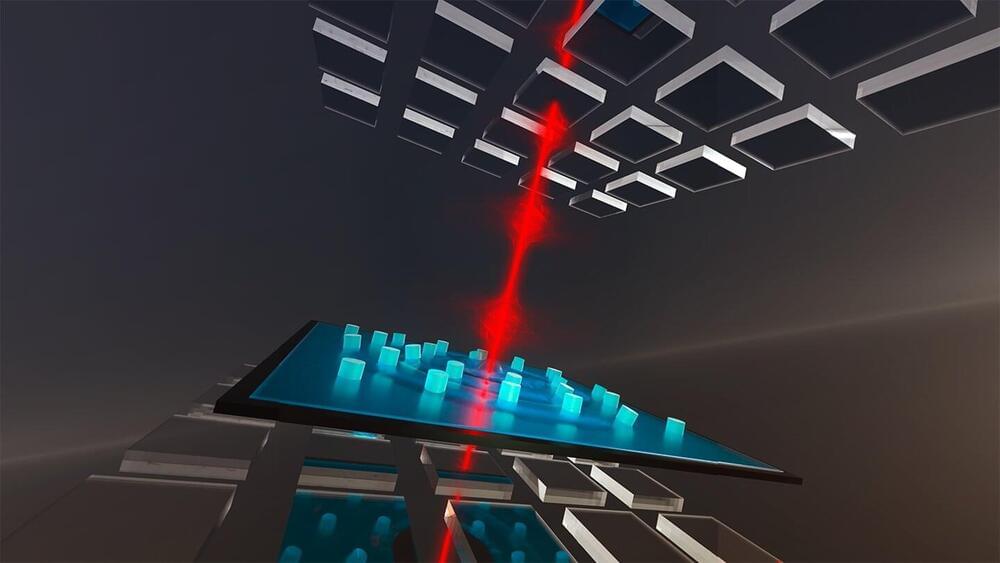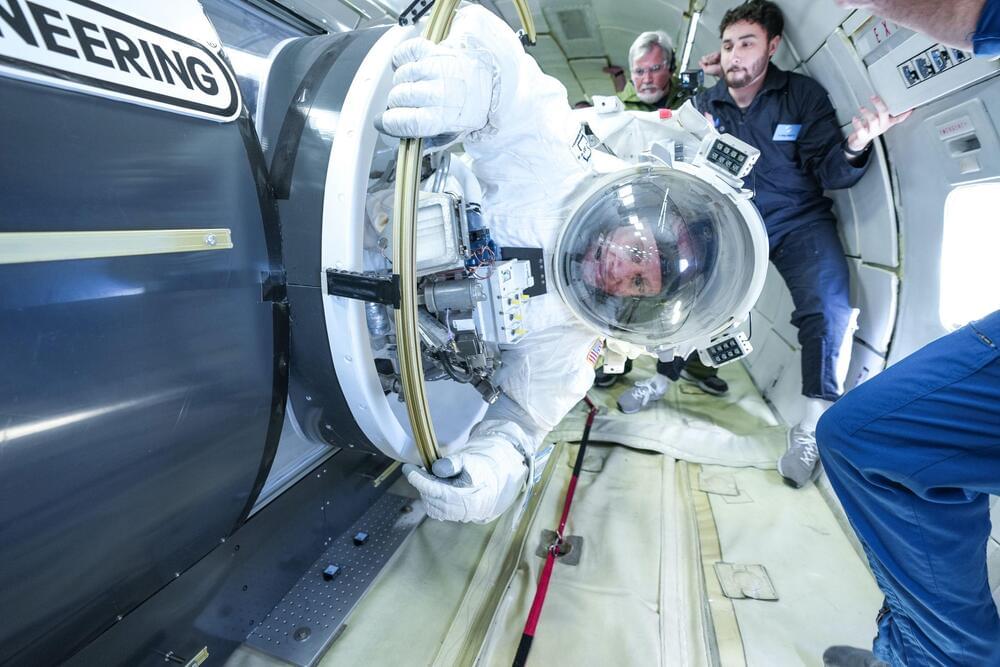A privately-owned spacecraft headed for the Moon has blasted off from Cape Canaveral, Florida. A SpaceX Falcon 9 rocket was used to launch the lunar lander, nicknamed Odysseus, with the hope that it will land on the Moon’s south pole – where scientists predict there could be a source of water. If all goes well, it will be the first time a private firm has successfully landed on the Moon. It would also be the first US mission in 51 years to complete a soft touchdown on the lunar surface. Subscribe: http://bit.ly/1rbfUog #Space #Moon #BBCNews
Get the latest international news and world events from around the world.

The Hottest Catalog of the Year: Comprehensive List of Slow-building Solar Flares
Although solar flares have been classified based on the amount of energy they emit at their peak, there has not been significant study into differentiating flares since slow-building flares were first discovered in the 1980s. Scientists have now shown that there is a significant amount of slower-type flares worthy of further investigation.
Solar flares occur when magnetic energy builds up in the Sun’s atmosphere and is released as electromagnetic radiation. Lasting anywhere from a few minutes to a few hours, flares usually reach temperatures around 10 million degrees Kelvin. Because of their intense electromagnetic energy, solar flares can cause disruptions in radio communications, Earth-orbiting satellites and even result in blackouts.
The width-to-decay ratio of a flare is the time it takes to reach maximum intensity to the time it takes to dissipate its energy.
Ex-NASA engineer Mark Rober created the world’s smallest Nerf gun — from DNA
Mission accomplished. Except Rober wasn’t done yet. Out of curiosity — and in preparation for the challengers to follow — he wondered if it was possible to make an even smaller blaster. One, say, three million times smaller? To answer that, he asked Pallav Kosuri, an assistant professor at the Integrative Biology Laboratory at the Salk Institute, if it was possible.
Kosuri’s reply: Sure! You just need to make it out of DNA.
The technique Kosuri had in mind is known as “DNA origami,” and like its paper-based namesake, it is both simple and intriguing. The idea to make microscopic structures with folded DNA was conceived by Nadrian Seeman, a crystallographer, Kosuri explained in an interview with Freethink.

BYD Pickup Truck Becomes a Ute for Australia
More spy pictures are emerging of the as yet unnamed BYD pickup truck. Most importantly there are pictures indicating that right-hand drive models are already being tested. This means that it will almost certainly be heading to the Australian market and possibly the South African market soon.
Chinese media has been keen on talking about the RHD version of this car being spied but as you will see none of the pictures clearly show the steering wheel on the right. However, if you look at the windscreen wipers, on the near head on spy shot, these appear to be positioned for a car driven from a seat on the right.

People Are Already Returning Their Apple Vision Pro Headsets
Shocking news: some folks who cashed out the eye-watering $3,500 — before tax! — to purchase Apple’s newly released Vision Pro are already showing some buyer’s remorse.
As Business Insider reports, a tide of users who quickly snatched up Apple’s expensive new face computer are returning the pricey headsets. Specific reasons for returning the devices vary, but across the board, it seems that many users just don’t think the uncomfortable devices are worth the hefty price tag — yet, at least.
As Insider notes, one of the most-cited cons to the Apple Pro is the headset’s weight. The thing is heavy, and though Apple’s attempted to offset the weight issue with what has to be the thickest head strap we’ve ever seen, the heft is a serious problem for users.

A ‘quantum leap’ at room temperature: Ultra-low noise system achieves optical squeezing
In the realm of quantum mechanics, the ability to observe and control quantum phenomena at room temperature has long been elusive, especially on a large or “macroscopic” scale. Traditionally, such observations have been confined to environments near absolute zero, where quantum effects are easier to detect. But the requirement for extreme cold has been a major hurdle, limiting practical applications of quantum technologies.
Now, a study led by Tobias J. Kippenberg and Nils Johan Engelsen at EPFL, redefines the boundaries of what’s possible. The pioneering work blends quantum physics and mechanical engineering to achieve control of quantum phenomena at room temperature.
“Reaching the regime of room temperature quantum optomechanics has been an open challenge since decades,” says Kippenberg. “Our work realizes effectively the Heisenberg microscope—long thought to be only a theoretical toy model.”


A new rental community is the nation’s first designed for car-free living
There’s a bold real estate experiment underway in Tempe, Arizona. Culdesac is the nation’s first rental community designed and built specifically for car-free living. Residents say it has helped them get to know there neighbors better. But the real test will be when temperatures climb this summer. CNBC Senior Real Estate Correspondent Diana Olick reports.

Next Generation Spacesuit Gets Tested in Weightlessness
Considerable effort goes into the design of space suits and space agencies across the world are always working on improvements to enhance safety and mobility of the designs. NASA is now working with Collins Aerospace to develop their next generation spacesuit for the International Space Station. The new designs are tested extensively and recently, the new design was subjected to a ZeroG flight on board a diving aircraft.
Collins Aerospace are an American technology company based in Charlotte in North Carolina. They were selected to develop the new suit as a replacement to the existing garments used by NASA. The official name of the suits are extravehicular mobility units and they have been worn for over two decades.
Once a prototype for the new suit was developed the project entered its test phase with one of the key elements, the microgravity or ZeroG test. To simulate ZeroG aircraft are taken on a parabolic flight. The pilot takes the plane to an altitude of around 24,000 feet and then pulls up increasing the climb angle to 45 degrees. Reaching an altitude of about 32,000 feet the plane is then put into a dive where the plane and its occupants experience ZeroG. For those inside, they will float around for between 20 and 30 seconds.
Case study features successful treatment of the oldest patient to achieve remission for leukemia and HIV
City of Hope, one of the largest cancer research and treatment organizations in the United States, treated the oldest person to be cured of a blood cancer and then achieve remission for HIV after receiving a blood stem cell transplant from a donor with a rare genetic mutation. Research published in the New England Journal of Medicine today demonstrates that older adults with blood cancers who receive reduced intensity chemotherapy before a stem cell transplant with donor cells that are resistant to HIV may be cured of HIV infection.
Paul Edmonds, 68, of Desert Springs, California, is the fifth person in the world to achieve remission for acute myelogenous leukemia and HIV after receiving stem cells with a rare genetic mutation, homozygous CCR5 Delta 32. That mutation makes people who have it resistant to acquiring HIV. Edmonds is also the person who had HIV the longest—for over 31 years—among these five patients.
Known as the “City of Hope patient” among these five patients, Edmonds received a transplant at City of Hope on Feb. 6, 2019, and is now considered to be cured of leukemia. Edmonds stopped taking antiretroviral therapies for HIV nearly three years ago and will be considered cured of HIV after he has stopped taking antiretrovirals for five years.